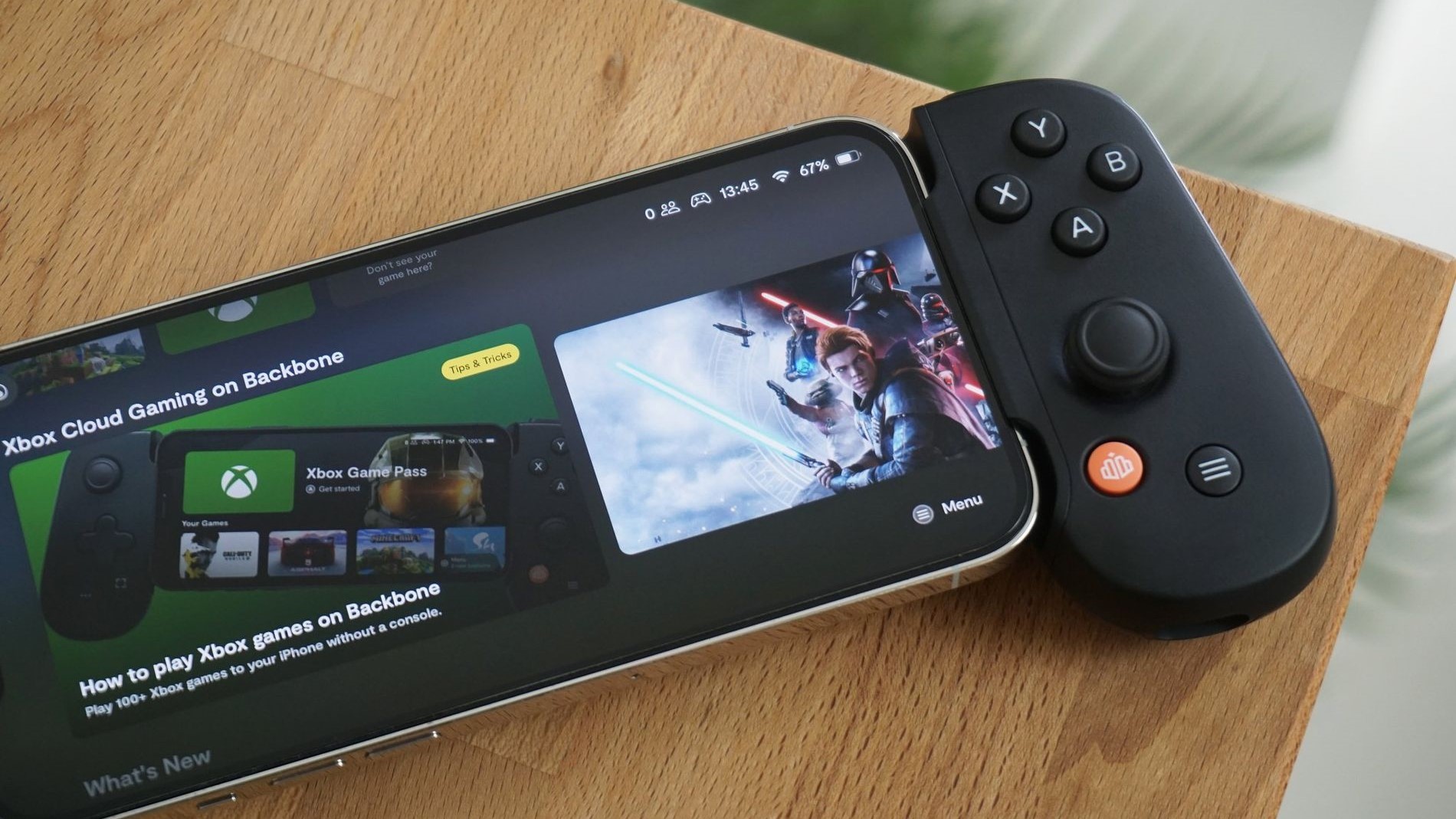Microsoft patent features 'hinge gestures,' curved-display correction for rumored 'Andromeda' PC
New patent applications by Microsoft show what their rumored foldable Surface could look like and do.
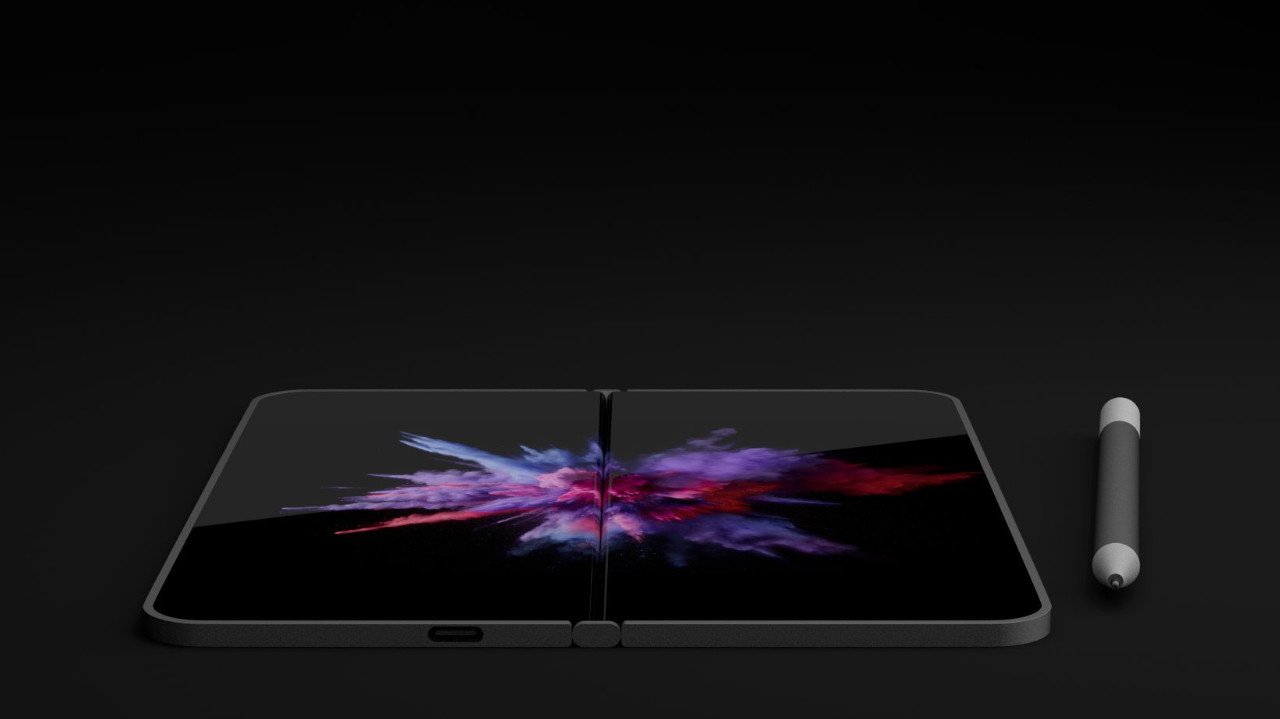
It's an open secret that Microsoft's engineers are obsessed with hinges (so much so those who work in the area are called "hingineers"), which makes these new patent applications unsurprising. Still, the focus on a foldable mobile device that happens to fit in your hands – and the ramifications of this interaction model – does give hints at what is believed to be Project Andromeda.
The patent applications both published on April 26, 2018 (and spotted by @stevenwlack) address two major concerns for a device with a foldable display:
- Input based on interactions with a physical hinge
- How light and images are corrected where the display curves
The first patent application US 2018/0113520 A1 shows in its accompanying images a now-familiar design: a mobile device that comfortably fits in both hands, but folds in the center of the display.
The question Microsoft is attempting to answer is how holding a device with two hands (both displays) versus closed – and the degree of the angles – affect usage models with the OS. Or, as the application puts it:
Mobile devices provide today's user with a variety of different functionalities, and in many instances allow the user to directly interact with objects displayed via touch-sensitive display devices. Devices having multiple display surfaces connected by a hinge, however, introduce complexities that are typically not resolved using conventional gesture input modalities.
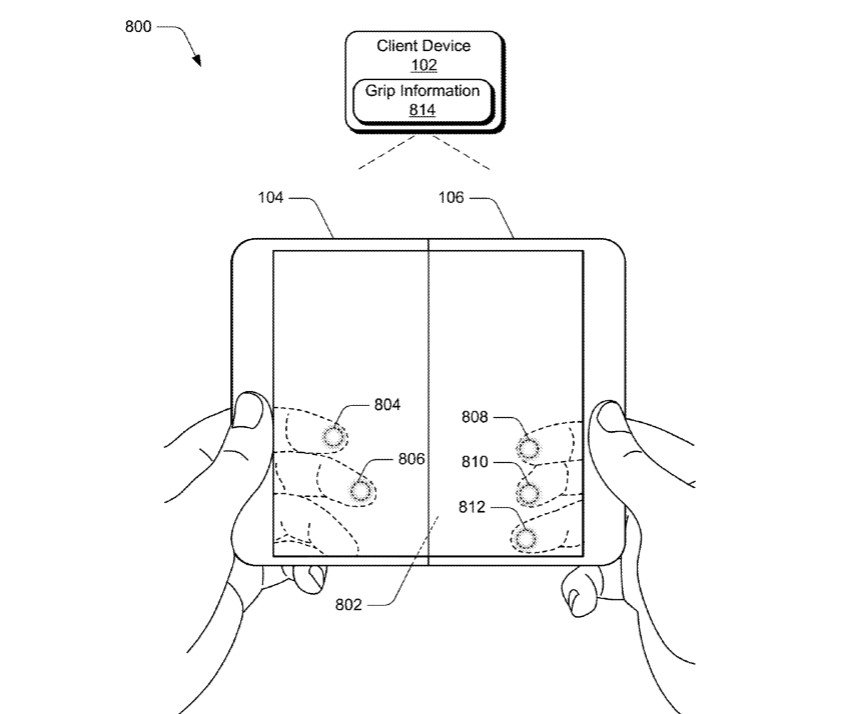
Consequently, a typical gesture language may be inefficient for these devices given the ergonomics of holding and interacting with such a device. This can detract from user enjoyment and lead to user frustration when using these types of devices.
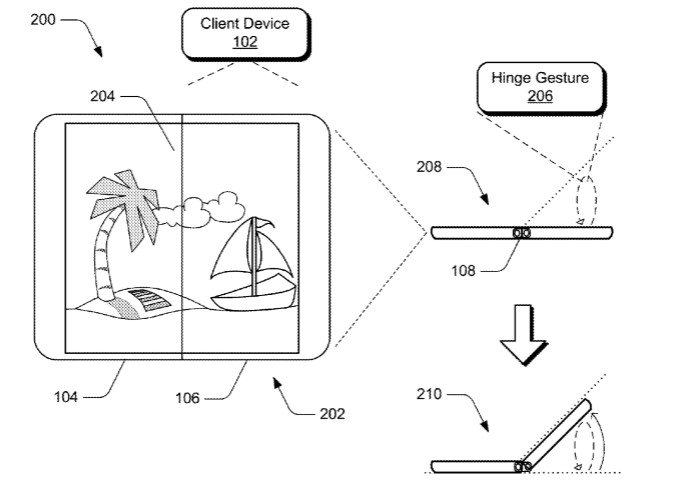
Microsoft then proposes what could be summarized as "hinge gestures" where the hardware and operating system are aware of the hinge, orientation, how the user is holding it and more. Again, from the application of the patent:
In some implementations, interactions with the hinge can be combined with one or more additional input signals to modify an operation associated with the hinge interaction. These additional input signals can include a variety of different input signals, such as an indication of an orientation of the device, a velocity at which the hinge interaction is performed, touch signals indicating how the user is holding the device, and so on. Accordingly, a variety of different input signals can be combined with the hinge interaction to modify the operation associated with the hinge interaction.
The reason Microsoft would want such a system is to make the OS radically smarter: "Use of an approximate hinge angle to switch between two or more discrete views of content or UI on one or more connected display screens, such as switching between different views of a dataset or showing/hiding chrome elements."
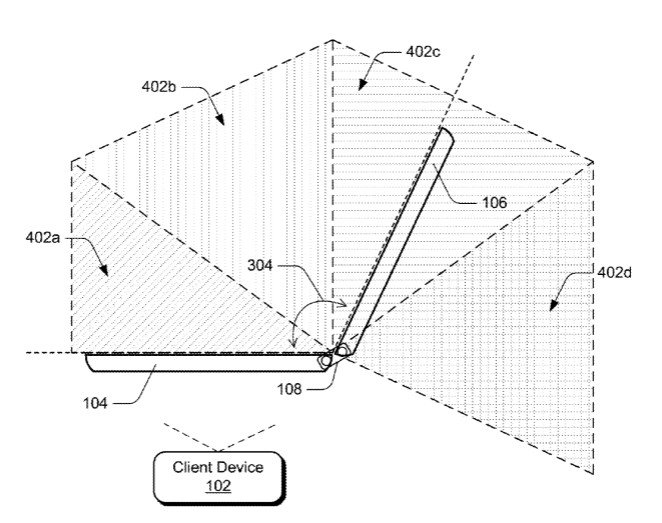
That language sounds a lot like Microsoft's Cshell – the adaptable UI that is the extreme version of Continuum where the OS adjusts its content based on the screen size, device, orientation and more.
All the latest news, reviews, and guides for Windows and Xbox diehards.
The second application is a little less exciting, but still very important. US Patent application US 2018/0113241 A1, also published on April 26, 2018, is concerned with how images on a display where it curves are viewed.
More specifically, whereas displays are now very good at presenting accurate information when flat how that content is displayed when it begins to curve can be problematic (think of astigmatism for eyesight and the need for corrective lenses).
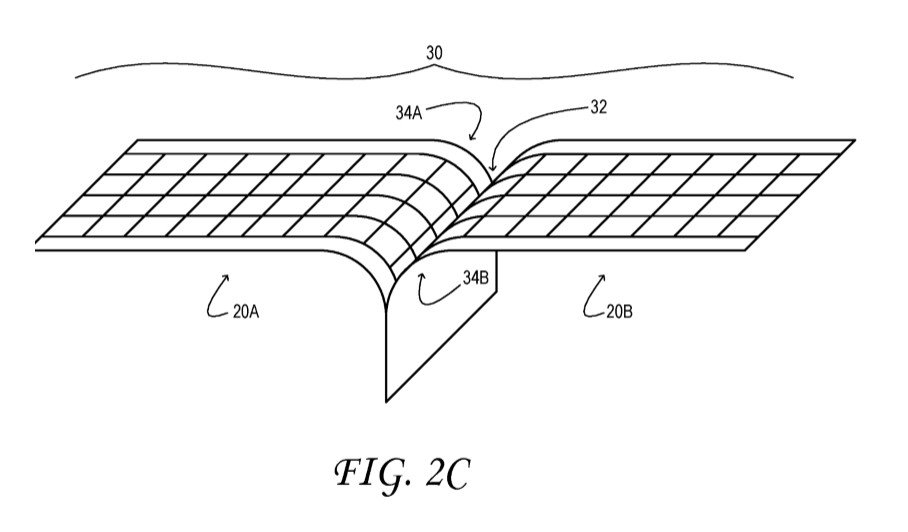
The patent application uses a lot of jargon, but the important part is here:
"An electronic display comprises a display matrix, an image-correcting layer, and a luminance-correcting layer. The display matrix includes a flat face portion, a curved corner portion, a light-releasing surface, and a series of pixels extending across the flat face portion and around the curved corner portion. Coupled to the light-releasing surface of the display matrix, the image-correcting layer is configured to transmit light released from the flat face portion of the display matrix and to reorient light released from the curved corner portion of the display matrix such that the transmitted light and the reoriented light exit the image-correcting layer substantially in parallel, forming an apparent plane image of the series of pixels. Arranged between the light-releasing display surface and the image-correcting layer, the luminance-correcting layer is configured to deflect the light released from the curved corner portion into an acceptance profile of the image-correcting layer."
Microsoft here is concerned with making the OS and content look the same as the flat portion of the display compared to where it curves. Again, that may seem trivial, but it is a complicated problem that needs to be solved by an "image-correcting layer" to give the illusion that the image is not curving.
My quick analysis
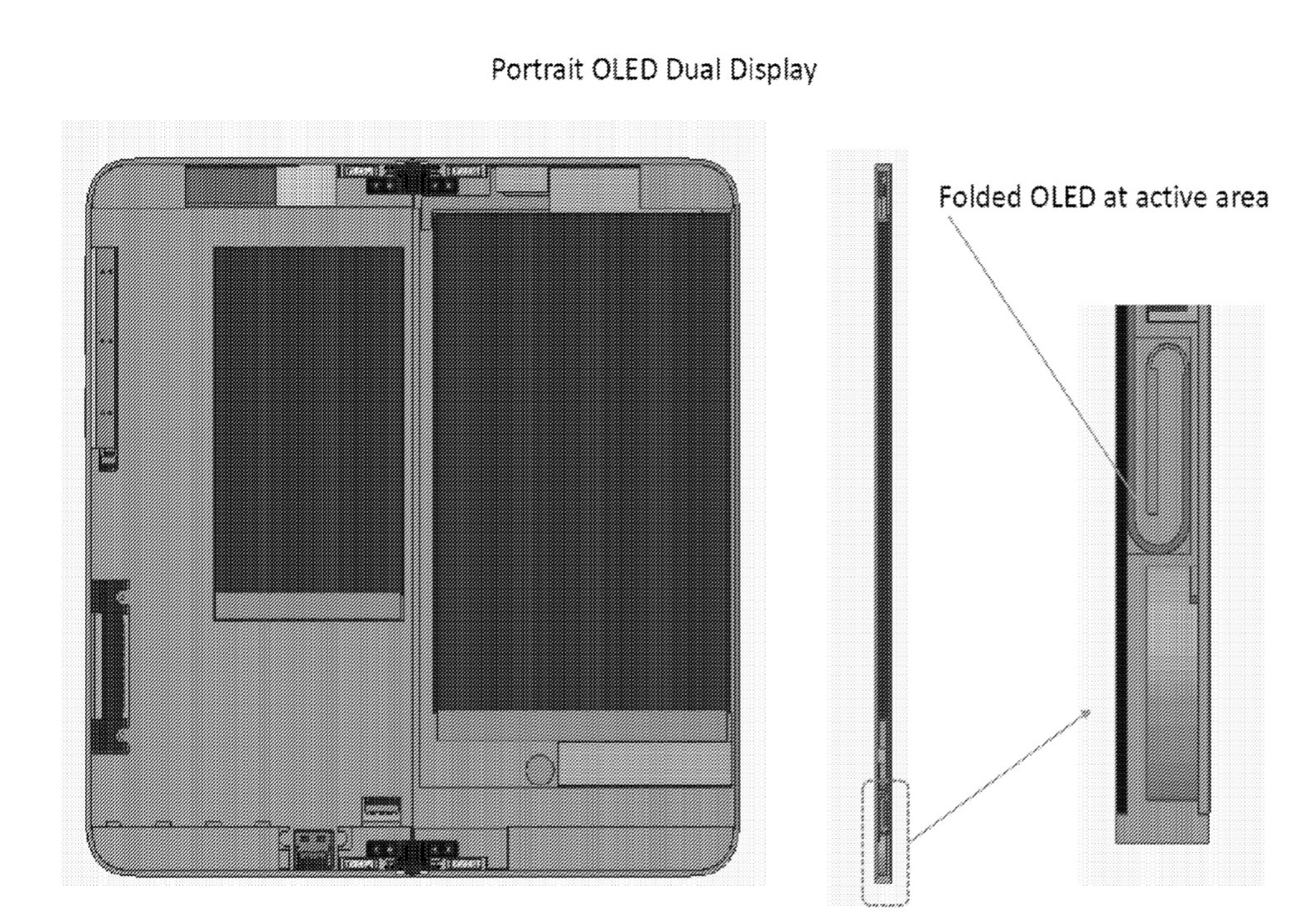
Both patents continue a massive series of applications and attempts by Microsoft to invent new technology around devices that fold in the middle of the display.
Project Andromeda is both a hardware project and software one with the latter focused on Windows Core OS as a stripped down, mobile version of full Windows 10 made for future handheld devices.
Since last year, we have been calling Andromeda the spiritual successor to the fabled Microsoft Courier project from 2010. While not a "Surface phone" the device is meant to kick off another form factor for computers that merge the best of smartphones with the best of tablet PCs for a more modern world. While the device is question can make phone calls it likely won't be positioned as a phone, but rather a digital Moleskin notebook.
It is clear from both patent applications – especially the first one – exactly the type of computer Microsoft has in mind. Think of a small Surface PC that folds in half with a light, modern OS that adjusts content based on its position.
Apps that have dual screen support to simulate a digital notebook are one application, whereas other times the user may want a full screen, e.g., for the OS. How the device handles the OS when going to "one" screen or two is something that needs to be solved if the experience is to be smooth and natural.
Whether or not Project Andromeda sees the light of day remains to be seen, but the sheer amount of research, engineering, and even paperwork around the concept is becoming daunting.
Despite Microsoft having a few Surface devices under its belts Project Andromeda seems the most complicated with more patent applications (e.g. this one, this one, this one, and definitely this one) filed for its underlying technology than any other Surface we have seen to date.
Hopefully, we'll hear more about this device this year. We still hear rumors of a fall release for Andromeda, which coincides with Windows 10 "Redstone 5". That next version of the OS is now focusing on cellular connections and a new radio stack, which is likely not a coincidence.
Surface folding device fan render in lead image by David Breyer.

Daniel Rubino is the Editor-in-chief of Windows Central. He is also the head reviewer, podcast co-host, and analyst. He has been covering Microsoft since 2007 when this site was called WMExperts (and later Windows Phone Central). His interests include Windows, laptops, next-gen computing, and wearable tech. He has reviewed laptops for over 10 years and is particularly fond of 2-in-1 convertibles, Arm64 processors, new form factors, and thin-and-light PCs. Before all this tech stuff, he worked on a Ph.D. in linguistics, performed polysomnographs in NYC, and was a motion-picture operator for 17 years.
